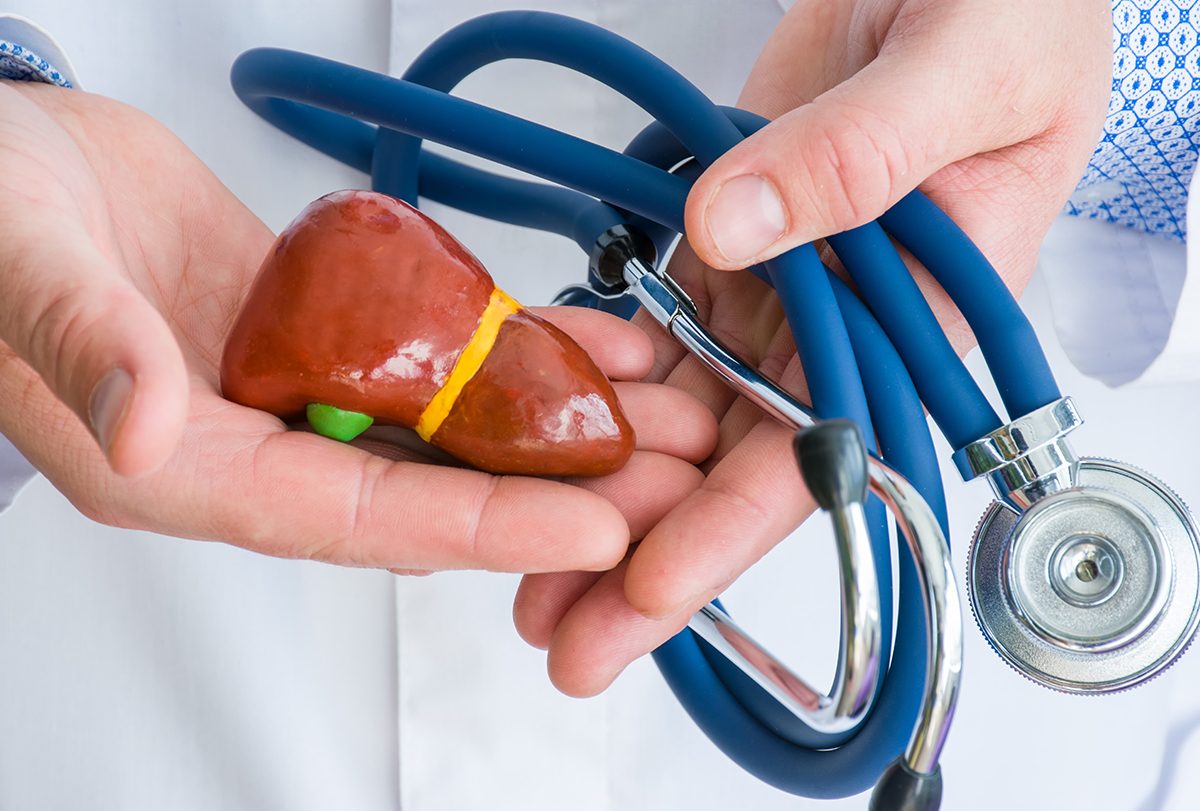In this article:
Non-alcoholic fatty liver disease (NAFLD) is a metabolic liver disease caused by an imbalance in the intake, formation, and utilization of fats, leading to the deposition of fat in the liver. It is not caused by alcohol consumption.

NAFLD can be divided into two categories:
- Hepatic steatosis or fatty deposition: The most benign form of fatty liver disease. Typically, there is no inflammation or scarring in the liver.
- Non-alcoholic steatohepatitis (NASH): In simple terms, NASH is fatty deposition with inflammation. Depending on the stage of the disease, there can be scarring or fibrosis in the liver and eventually cirrhosis with complications thereof. NASH can lead to cirrhosis, which is the end-stage scarring of the liver that occurs with any type of chronic inflammatory liver disease. (1)
Prevalence of NAFLD
In the United States, Mexican Hispanics (45%) are at the highest risk of developing NAFLD due to the presence of the gene PNPLA3, (2) followed by Caucasians, African-Americans, and Asians.
Based on physical factors, obesity (up to 70%) and diabetes (50%) are associated with the highest risk of fatty liver disease.
Causes of NAFLD
The most common causes of fatty liver disease include obesity, (3) diabetes, (4) and increased lipid (fat) levels in the blood. Certain medications can cause fatty liver disease, but this should be considered separately.
Major Symptoms of NAFLD

Most patients with NAFLD do not have any symptoms. On occasion, patients can have discomfort in the right upper quadrant of the abdomen or an enlarged liver. If a patient has advanced NASH cirrhosis, the symptoms are due to the cirrhosis. Fluid retention, gastrointestinal bleeding, confusion, and fatigue can develop. (5)
Diagnosing NAFLD
The most cost-effective test for diagnosing NAFLD is an abdominal ultrasound. The hepatologist will need to rule out other forms of liver disease and make the decision as to whether or not a liver biopsy is needed.
If fibrosis is present on a noninvasive fibrosis test, the assumption is the patient has the more aggressive form of NAFLD, i.e., NASH.
Once a NAFLD diagnosis is confirmed, the doctor may order a few additional tests including blood work and an ultrasound called the fibro scan to determine how advanced the disease is. A liver biopsy might be necessary if there is any question about the degree of fibrosis and/or the diagnosis. Through the hepatologist, drug trials may be available.
Lifestyle Changes and Diet Modification

A decrease in calorie consumption and increased exercise (calorie utilization) are the two major goals of lifestyle modification in patients with NAFLD.
The main goal of a diet is to decrease calorie consumption. There are scientific data supporting the use of the ketogenic diet for the management of NAFLD.
Is NAFLD Reversible?
Fatty liver deposition or hepatic steatosis can improve with weight loss if the cause is obesity. If a patient has NASH, there can be a reduction in the fat in the liver and some improvement in the scarring.
Studies are ongoing investigating the effects of lifestyle modification, weight loss, and experimental treatments on the natural history of NASH. (6)
Complications Related to NAFLD
NAFLD can be very serious, especially if the patient has NASH. Approximately 25%–30% of patients with NASH can develop cirrhosis and eventual liver failure, which then warrants a liver transplant.
It is also associated with an increased risk of cardiovascular disease and liver cancer. All in all, people suffering from this severe form of NAFLD are more likely to succumb to liver-related problems.
When to See a Doctor

If a patient has persistently elevated liver enzymes, which are signs of advanced liver disease, the patient should be referred to a specialist. A primary care physician might know to order or calculate some type of noninvasive test to assess the degree of fibrosis.
If there is any fibrosis or the test result is indeterminate, the patient should also be referred to a specialist.
Final Word
There is no cure for NAFLD. In patients with obesity, diabetes, and high lipid levels, lifestyle modification and exercise can lead to improvement in the liver disease. There are studies ongoing looking at medical treatments for more advanced forms of NAFLD, i.e., NASH with varying degrees of fibrosis. (7)
- Was this article helpful?
- YES, THANKS!NOT REALLY


